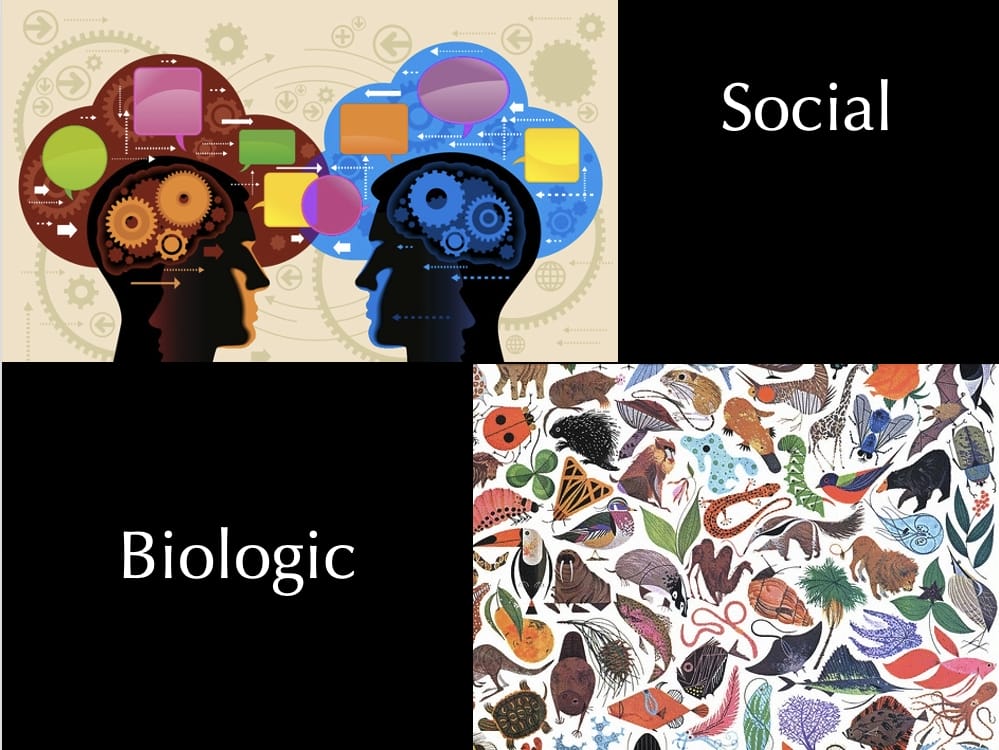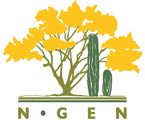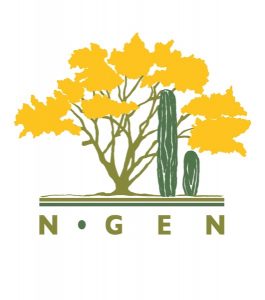
Title: Collaboration between the Human and Ecological paradigms in the face of the current challenges affecting the Sonoran desert region
Convener: Rodrigo F. Renteria Valencia
Participants: Thomas Bowen, Elisa Villalpando, Jupiter Martinez, Carolyn O’Meara, Alexis Rife, Sue Rutman, Lucero Radonic, + 2 more (missing names).
Discussion:
This session aimed to continue the discussion initiated by Dr. Bowen on the inherent challenges to incorporate different scientific paradigms in our daily practices as scholars. The initial purpose of the session was to identify urgent or pressing issues currently
affecting the Gulf of California and the larger Sonoran desert that need to be tackle from both the social and the ecological paradigms. I was personally interested in discussing the heuristic limits of considering the human dimension as a simple variable in the analysis of ecological processes; a critique that departed from the assumption that human disturbance can no longer be considered merely as a simple variable, but ultimately as the intrinsic context –at multiple scales—of any ecological process. I relied on the concept of ecological expertise to stir such conversation. Discussion however centered on the more practical aspects that any collaboration of this nature required, especially in terms of affecting the social imaginaries responsible for the drastic changes taking place in the environment of the Gulf of California.
In short, the discussion held during this session focused on four major themes: 1) the problem of conservation in human settings, 1) the complex nature of tourism development in the Gulf and, 3) the possibility as scholar of having an impact on the social imaginaries that define behavior and 4) by extension, the intrinsic challenges embedded in the dissemination of academic knowledge and scientific wonder (i.e. the trill of discovery).
In relation to the first theme, the participants discussed the problematic of continue to conserve the great islands of the Gulf without control of the drastic transformations and pressures experienced in the coastal areas, both of Sonora and Baja California. Albeit it is necessary to recognize the great conservation status that the Islands maintain, the human influence is seldom considered (as tidal current-related pollution, sport fishing, unregulated camping, and fisheries, continue to affect the islands) particularly in terms of the massive transformations taking place in the continental shores. These transformations have to do for the most part with the implementation of mass-tourism developments, the strong impact of fisheries and, the exponential growth of coastal communities in the region. With this in consideration, the need to expand the area of conservation to the continental shores, and by extension, the human settlement living on it, constitutes a highly complex step that needs to be address from both paradigms.
In this context, the conversation of the session shifted to discuss tourism in coastal areas as a major threat to the ecological systems in the Gulf. However, the different forms and scales under which tourism operates in the region lead to an effort to define the nature of tourism in the Gulf. The classification rendered the following actors: 1) mass-tourism developments taking place in areas like Rocky mountain (Puerto Peñasco) and Loreto as market-driven process with enormous social and ecological impacts, 2) ecotourism as an alternative to mass-developments but severely restricted in scale, and 3) the type of local tourism that occurs in places like Kino bay, where sadly, the social imaginaries that define “how to behave as a tourist” involve trashing the beach, collecting archaeological samples and destroying habitats, etc. Following this classificatory effort, the session opened a discussion of the inherent dangers of specific environmental ethos (or rather, lack of) in urban settings, where “going on vacation” equals abusing and to a certain extent conquering the desert –armed with cold beer, air conditioning and lots of trash. Attention shifted to a vivid discussion on the limits that academia and academics have to impact and change such detached-from-nature urban ethos. Several points were made stressing the need to balance the factual nature of academia with the more emotional aspects of science (its intrinsic wonder around discovery) that “lay” people can more easily relate to. Only then, was agreed, we could truly attempt –as scientists— to change environmental and social behavior. Possible paths for this type of scientific contribution were discussed in terms of 1) comic-like booklets that could be distributed in touristic locations providing both ecological and social information of how to better approach the place of tourism (a river, a beach, an island, etc.); 2) video and documentaries where the same ecological/social information about a place becomes “emotional”, “accessible” to locals.
The participants of the session used these two said venues for the distribution of scientific knowledge and “passion” as a way to wrap up the different points previously addressed. It was clear for all the participants that collaboration between de social and ecological paradigms was no longer an option but a necessity if we aim to give account –and have a roll in the shape of— the new processes currently affecting the Gulf of California and the larger Sonoran Desert. But to do so, it is necessary that we go beyond the comfort zones of academia, merely reproducing pre-established venues that lack grounding (i.e. impact) in the areas affected by the processes we analyze. Therefore, collaboration between the different disciplines is contingent upon the creation of new forms of showing the ‘facts’ and ‘wonders’ of living and working in the Sonoran Desert.


